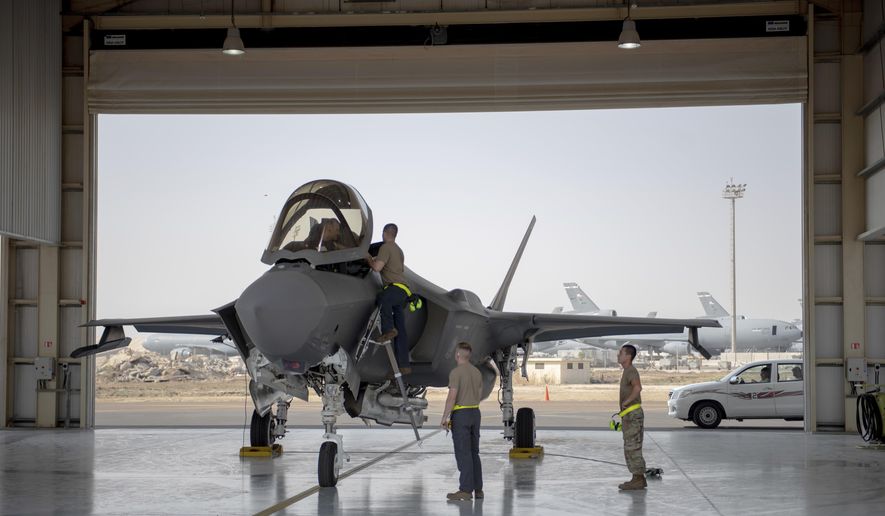OPINION:
When the thrust of your defense procurement strategy is to please its benefactors in Congress rather than achieve and increase strategic demands, you’ll get some odd outcomes.
One is that the goal becomes not to build a great weapons system but to get one or two in the field as quickly as possible. That’s how the F-35 fighter jet became the largest and most wasteful project in the history of defense acquisition and it’s now the Navy must decide what to do about its increasingly costly Freedom class of littoral combat ships.
In the case of the F-35, the effort to field aircraft before final testing caused the planes to have problems that prevented them from flying in thunderstorms or at the speed for which they were designed.
Further, the aircraft was conceived as a way to save money and promote interoperability — the Navy, Air Force and Marines would use the same plane.
But the Navy, Air Force and Marines had different needs for the aircraft, which led to different designs, which led to still more delays and cost overruns. We’ve sold them to allies around the world and set up supply lines in those countries as well, further exposing the technology to possible transfer to adversaries.
Between the delays in production while huge issues were dealt with in regard to design and the procurement process, the plane is now out of date, and its technology is in the hands of adversaries — as demonstrated by recent news that Russia has developed anti-aircraft technology designed specifically to overcome the F-35.
The Department of Defense recognizes the problem and has developed its Next-Generation Air Dominance program, headquartered at the Air Force, to address it. Rather than tie our fortunes to an aircraft for decades and allowing adversaries to catch up to it and procurement rot to sink in, it proposes that the U.S. be in constant redesign mode and produce new aircraft every five years or so.
But Congress is invested in the F-35 — to the tune of about $1.2 trillion before the program winds down over the next 15 years — and members of Congress are invested in keeping the parts manufacturers and other businesses that earn money off the F-35 from losing their contracts.
And with Democrats in control of both houses of Congress and the White House, doubling up on defense spending is unlikely.
Similarly, the Navy reached a point after the Cold War where it found its ships designed for open ocean warfare but perhaps vulnerable in more shallow waters near the shore. Littoral combat ships are smaller, more maneuverable craft that can be reconfigured to serve a variety of roles.
But the Freedom class littoral combat ships — with 17 ships fielded since 2008 — has what increasingly appears to be a class-wide design defect that would require design changes for any new Freedom class littoral ship constructed and the retrofitting of all existing ships.
The latest problem with the littoral ships is with the “combining gear,” a transmission that connects power from two large gas turbine engines and two main propulsion diesel engines to the ship’s propulsion shafts, which in turn propel the ship through the water with water jets.
The combining gear on the USS Detroit, a littoral ship, failed at sea in October, and the ship had to be towed back to port. The contractors who built the ship — Lockheed and RENK AG, a German firm — are conducting a “root cause analysis” of the mishap, but the nature of the problem and the difficulty of repairing have the Navy close to concluding the entire class needs to be retrofitted and redesigned to address the flaw.
Meanwhile, the 10 ships still in service are trying to muddle through by operating at lower speeds — no more than 10 knots on ships designed to travel up to 40 knots — to limit use of the combining gear. The Navy is trying to figure out what to do – the gear boxes on Navy ships are not designed to be repaired or retrofitted over the life of the ship, and it’s unknown if they even can be repaired — and, more importantly, who will pay for the problem.
Lockheed, which stands to profit from any repair or retrofitting, designed the ship, which has concerned the Navy and other policymakers about the specter of a contractor building in problems to its products so it can later profit from these repairs and retrofits.
What it must count on is that the weapons systems it purchases work as planned and provide the value Americans expect for their tax dollars. That means not deploying systems that aren’t ready, and, most importantly, letting need and taxpayer value be the top drivers of policy.
• Brian McNicoll, a freelance writer based in Alexandria, Virginia, is a former senior writer for The Heritage Foundation and former director of communications for the House Committee on Oversight and Government Reform.




Please read our comment policy before commenting.